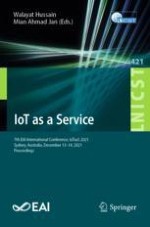2022 | Book
IoT as a Service
7th EAI International Conference, IoTaaS 2021, Sydney, Australia, December 13–14, 2021, Proceedings
Editors: Walayat Hussain, Mian Ahmad Jan
Publisher: Springer International Publishing
Book Series : Lecture Notes of the Institute for Computer Sciences, Social Informatics and Telecommunications Engineering
